-
 Bitcoin
Bitcoin $105,734.0170
-1.51% -
 Ethereum
Ethereum $2,414.7328
-3.26% -
 Tether USDt
Tether USDt $1.0002
0.00% -
 XRP
XRP $2.1748
-2.62% -
 BNB
BNB $647.5663
-1.72% -
 Solana
Solana $148.1710
-3.81% -
 USDC
USDC $0.9999
-0.01% -
 TRON
TRON $0.2799
-0.02% -
 Dogecoin
Dogecoin $0.1586
-4.17% -
 Cardano
Cardano $0.5440
-5.03% -
 Hyperliquid
Hyperliquid $37.0680
-6.59% -
 Bitcoin Cash
Bitcoin Cash $501.2052
-4.01% -
 Sui
Sui $2.6846
-3.47% -
 Chainlink
Chainlink $12.8488
-3.38% -
 UNUS SED LEO
UNUS SED LEO $8.9480
-1.51% -
 Avalanche
Avalanche $17.2059
-3.87% -
 Stellar
Stellar $0.2270
-4.75% -
 Toncoin
Toncoin $2.7889
-3.93% -
 Shiba Inu
Shiba Inu $0.0...01126
-1.76% -
 Litecoin
Litecoin $83.6893
-3.36% -
 Hedera
Hedera $0.1445
-4.49% -
 Monero
Monero $312.4014
-2.58% -
 Dai
Dai $1.0000
0.00% -
 Ethena USDe
Ethena USDe $1.0001
-0.01% -
 Polkadot
Polkadot $3.2920
-3.32% -
 Bitget Token
Bitget Token $4.4629
-1.81% -
 Uniswap
Uniswap $6.5386
-8.42% -
 Aave
Aave $260.3780
-6.01% -
 Pepe
Pepe $0.0...09308
-4.54% -
 Pi
Pi $0.4864
-3.04%
How to safely remove scam tokens from Trust Wallet?
Scam tokens in Trust Wallet are fraudulent assets designed to deceive users, often appearing through phishing, fake airdrops, or unauthorized approvals.
Jul 02, 2025 at 12:28 am
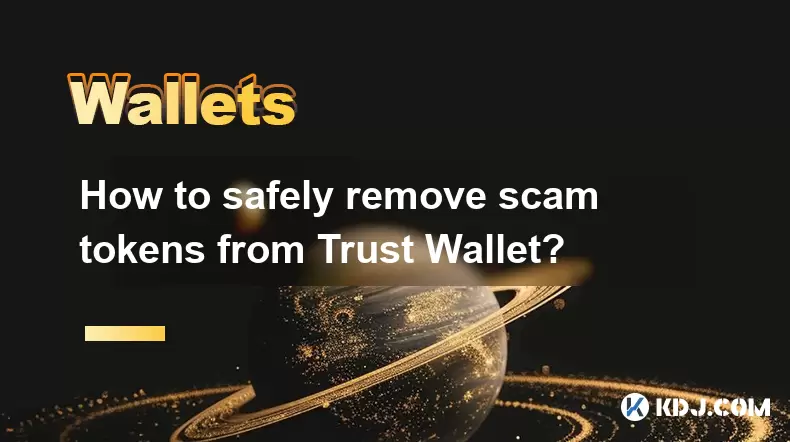
Understanding Scam Tokens in Trust Wallet
Scam tokens are fraudulent or malicious digital assets that often appear legitimate but have no real value or purpose. These tokens can be created to deceive users into sending funds, granting permissions, or simply cluttering a wallet with useless assets. Trust Wallet, being a popular non-custodial wallet, is commonly targeted by such scams due to its user-friendly interface and integration with multiple blockchains.
Before attempting to remove scam tokens, it is crucial to understand how they end up in your wallet. Most scam tokens arrive through phishing attacks, fake airdrops, or unauthorized contract approvals. They may also appear as suspicious transactions from unknown decentralized applications (dApps). Recognizing these patterns helps ensure you're not falling victim to further manipulation.
Identifying Scam Tokens in Your Wallet
To safely remove scam tokens from Trust Wallet, you must first identify them correctly. Here's how:
- Look for unfamiliar token names or symbols.
- Check if the token has no official website or whitepaper.
- Verify whether the token is listed on any reputable exchange.
- Use blockchain explorers like BscScan or Etherscan to inspect the token contract address.
If a token shows signs of being suspicious—such as anonymous developers, sudden appearance without action from your side, or an unusual balance—it’s likely a scam. Never interact with unknown tokens, including trying to send or swap them, as this could trigger malicious smart contract functions.
Preventing Further Exposure to Scam Tokens
Before removing existing scam tokens, take preventive measures to avoid future exposure:
- Avoid clicking on suspicious links or participating in unsolicited airdrops.
- Revoke unnecessary token approvals using tools like Revoke.cash or directly through Trust Wallet settings.
- Only connect your wallet to trusted dApps and websites.
- Enable two-factor authentication (2FA) wherever possible.
By securing your wallet environment, you reduce the chances of encountering new scam tokens. It's important to regularly audit connected apps and permissions to ensure nothing is operating without your knowledge.
Removing Scam Tokens from Trust Wallet
Removing scam tokens involves hiding them rather than deleting them permanently, as blockchain records cannot be erased. Follow these steps to hide scam tokens effectively:
- Open Trust Wallet and navigate to the wallet address where the scam token appears.
- Tap on the Tokens tab.
- Locate the unwanted token and swipe left on its card.
- Select the Hide option.
Alternatively, you can manually edit your token list:
- Go to Settings > Wallet > Manage Tokens.
- Choose the relevant blockchain (e.g., Binance Smart Chain, Ethereum).
- Scroll down to find the scam token.
- Toggle off the switch next to the token name.
This method ensures the token no longer appears in your main wallet view, reducing visual clutter and minimizing accidental interaction.
Advanced Methods for Token Removal
For users who want more control over their token management, consider using third-party tools or advanced features within Trust Wallet:
- Use blockchain explorers to check if the token contract has been flagged for suspicious activity.
- Explore token revocation tools like Unrekt or Revoke.cash to revoke approvals given to malicious contracts.
- Manually adjust custom tokens via Settings > Wallet > Manage Tokens > Add Custom Token and exclude problematic ones.
These advanced techniques allow for deeper inspection and better control over which tokens are visible or interactable in your wallet. However, always proceed with caution when interacting with unknown contracts or external services.
Securing Your Wallet After Removing Scam Tokens
Once scam tokens are hidden or removed, focus on reinforcing your wallet security:
- Backup your wallet recovery phrase in a secure, offline location.
- Regularly update Trust Wallet to benefit from the latest security patches.
- Monitor your transaction history for any unusual activity.
- Consider using hardware wallets for long-term storage of valuable assets.
Maintaining a clean and secure wallet environment prevents future incidents and protects your digital assets from unauthorized access.
Frequently Asked Questions
Q: Can I completely delete scam tokens from my Trust Wallet?
A: No, you cannot delete scam tokens since blockchain data is immutable. However, you can hide them from view using the built-in token management feature.
Q: Will hiding a scam token affect my other assets?
A: No, hiding a token only removes it from your visible asset list and does not impact your wallet balance or other tokens.
Q: What should I do if I accidentally sent funds to a scam token contract?
A: If you mistakenly transferred funds to a scam token contract, those funds are likely lost. Always double-check recipient addresses and contract details before confirming transactions.
Q: How can I report a scam token found in Trust Wallet?
A: While Trust Wallet itself doesn’t offer a direct reporting system, you can report suspicious tokens to blockchain explorers or community forums to warn others about potential threats.
Disclaimer:info@kdj.com
The information provided is not trading advice. kdj.com does not assume any responsibility for any investments made based on the information provided in this article. Cryptocurrencies are highly volatile and it is highly recommended that you invest with caution after thorough research!
If you believe that the content used on this website infringes your copyright, please contact us immediately (info@kdj.com) and we will delete it promptly.
- Robert Kiyosaki Still Bullish on Bitcoin: Why $107K is 'Cheap'
- 2025-07-02 20:30:12
- Aethir's Checker Node Licenses: Now Tradeable and Making Waves!
- 2025-07-02 20:30:12
- Instant Payments, Fintech, and USDC Stablecoins: A New Era of Finance?
- 2025-07-02 18:30:12
- XRP, Ripple Labs, and Escrow: Decoding the Latest Moves
- 2025-07-02 18:30:12
- Crypto Summit, White House, and Bitcoin Solaris: A New Era?
- 2025-07-02 18:50:12
- DeFi, Aptos, and Token Generation: A New Era?
- 2025-07-02 18:50:12
Related knowledge

What is "rent" on Solana and how does it affect my Phantom wallet?
Jul 02,2025 at 08:35pm
Understanding 'Rent' on SolanaIn the context of Solana, the term 'rent' refers to a storage fee that users pay for maintaining data on the blockchain. Unlike Ethereum, where storage costs are paid once via gas fees during contract deployment, Solana implements a recurring cost model to ensure efficient usage of network resources. This means that any acc...
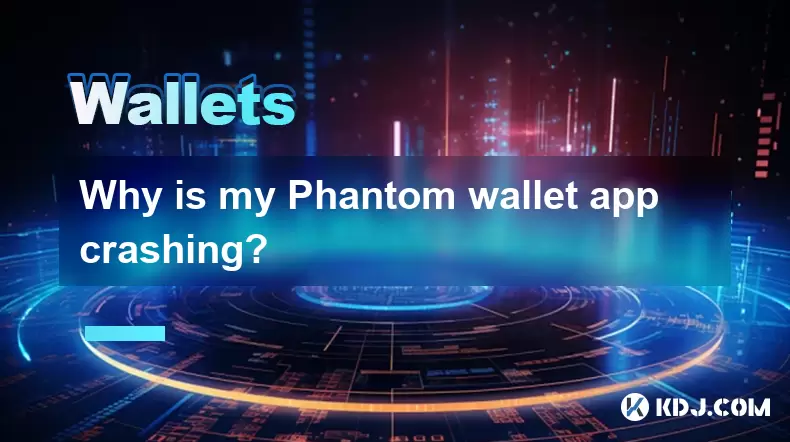
Why is my Phantom wallet app crashing?
Jul 02,2025 at 07:35pm
Understanding Phantom Wallet App CrashesIf you're experiencing issues with the Phantom wallet app crashing, you're not alone. Many users have reported similar problems, especially during high network activity or after recent updates. Phantom is a popular Solana-based wallet that allows users to store, send, and receive SOL tokens as well as interact wit...
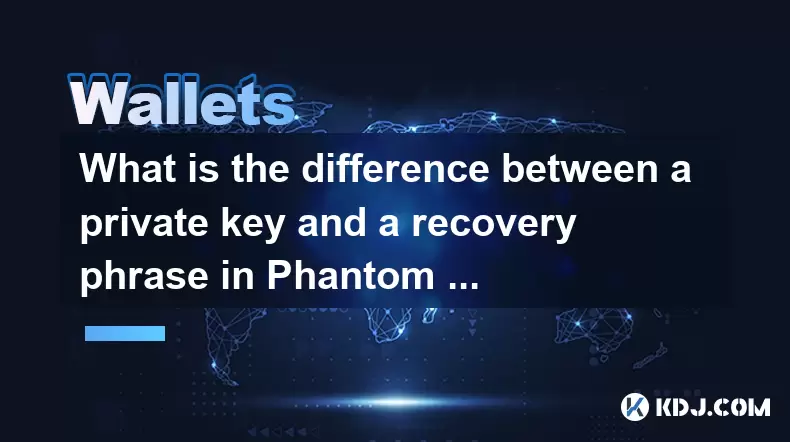
What is the difference between a private key and a recovery phrase in Phantom wallet?
Jul 02,2025 at 09:57am
Understanding the Basics of Phantom WalletPhantom wallet is a non-custodial digital wallet primarily used for interacting with the Solana blockchain. It allows users to store, send, and receive SOL tokens and other digital assets like NFTs. Non-custodial means that the user retains full control over their private keys and recovery phrases. Understanding...
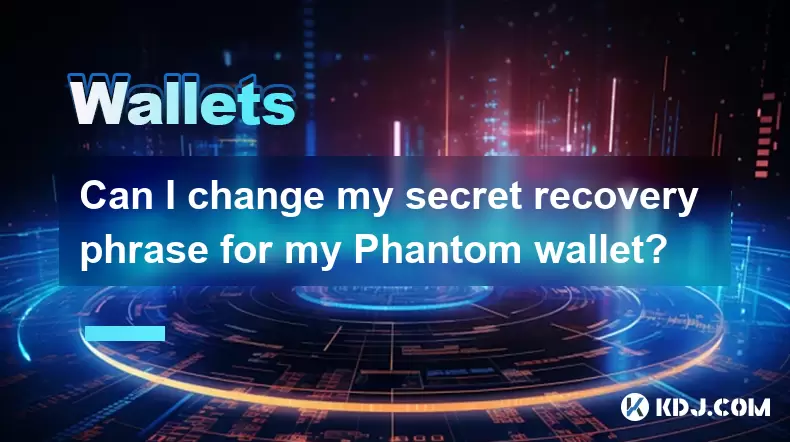
Can I change my secret recovery phrase for my Phantom wallet?
Jul 02,2025 at 12:07pm
Understanding the Role of a Secret Recovery PhraseThe secret recovery phrase, often referred to as a seed phrase, is a critical component in managing cryptocurrency wallets like Phantom. It serves as a backup mechanism that allows users to recover their wallet and associated assets if they lose access to their device or password. Typically, this phrase ...
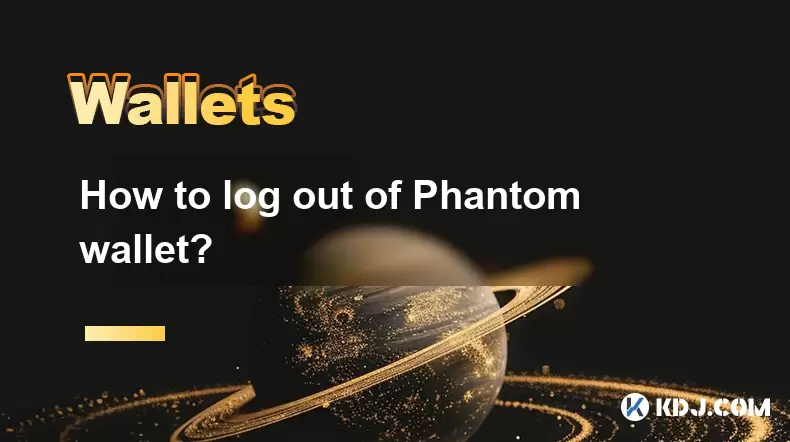
How to log out of Phantom wallet?
Jul 02,2025 at 05:28pm
What Is Phantom Wallet?Phantom wallet is a popular non-custodial cryptocurrency wallet designed primarily for the Solana blockchain, offering users the ability to store, send, and receive SOL and SPL tokens. It also supports integration with decentralized applications (dApps) and allows users to participate in staking, governance, and NFT trading. Being...
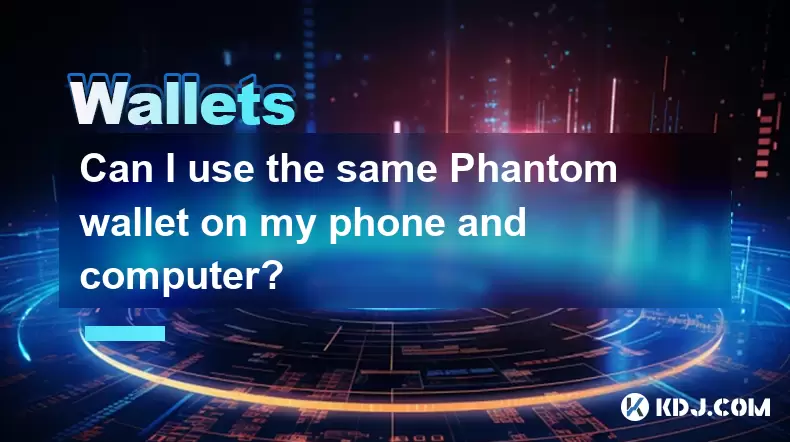
Can I use the same Phantom wallet on my phone and computer?
Jul 02,2025 at 10:04am
Phantom Wallet: Cross-Device CompatibilityPhantom wallet is a non-custodial cryptocurrency wallet designed primarily for interacting with the Solana blockchain. It supports both browser extensions and mobile applications, making it versatile for users who want to manage their digital assets across multiple devices. One of the most common questions among...

What is "rent" on Solana and how does it affect my Phantom wallet?
Jul 02,2025 at 08:35pm
Understanding 'Rent' on SolanaIn the context of Solana, the term 'rent' refers to a storage fee that users pay for maintaining data on the blockchain. Unlike Ethereum, where storage costs are paid once via gas fees during contract deployment, Solana implements a recurring cost model to ensure efficient usage of network resources. This means that any acc...

Why is my Phantom wallet app crashing?
Jul 02,2025 at 07:35pm
Understanding Phantom Wallet App CrashesIf you're experiencing issues with the Phantom wallet app crashing, you're not alone. Many users have reported similar problems, especially during high network activity or after recent updates. Phantom is a popular Solana-based wallet that allows users to store, send, and receive SOL tokens as well as interact wit...

What is the difference between a private key and a recovery phrase in Phantom wallet?
Jul 02,2025 at 09:57am
Understanding the Basics of Phantom WalletPhantom wallet is a non-custodial digital wallet primarily used for interacting with the Solana blockchain. It allows users to store, send, and receive SOL tokens and other digital assets like NFTs. Non-custodial means that the user retains full control over their private keys and recovery phrases. Understanding...

Can I change my secret recovery phrase for my Phantom wallet?
Jul 02,2025 at 12:07pm
Understanding the Role of a Secret Recovery PhraseThe secret recovery phrase, often referred to as a seed phrase, is a critical component in managing cryptocurrency wallets like Phantom. It serves as a backup mechanism that allows users to recover their wallet and associated assets if they lose access to their device or password. Typically, this phrase ...

How to log out of Phantom wallet?
Jul 02,2025 at 05:28pm
What Is Phantom Wallet?Phantom wallet is a popular non-custodial cryptocurrency wallet designed primarily for the Solana blockchain, offering users the ability to store, send, and receive SOL and SPL tokens. It also supports integration with decentralized applications (dApps) and allows users to participate in staking, governance, and NFT trading. Being...

Can I use the same Phantom wallet on my phone and computer?
Jul 02,2025 at 10:04am
Phantom Wallet: Cross-Device CompatibilityPhantom wallet is a non-custodial cryptocurrency wallet designed primarily for interacting with the Solana blockchain. It supports both browser extensions and mobile applications, making it versatile for users who want to manage their digital assets across multiple devices. One of the most common questions among...
See all articles

























































































